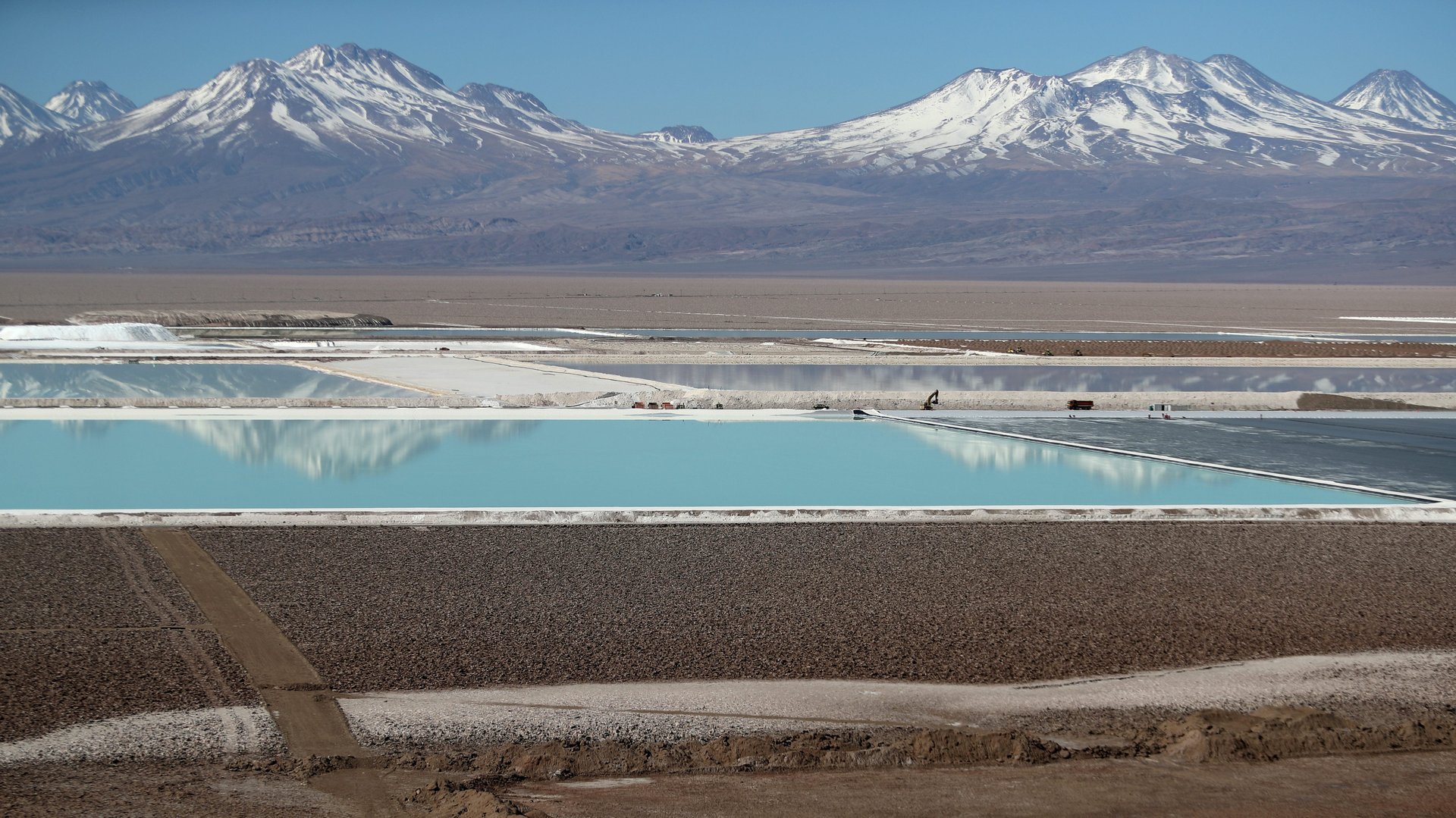Electric cars are fueling the US’s lithium mining boom
Lithium, a silvery metal so lightweight it floats on water, has been dubbed “white gold.” The element is key to the future of the automobile industry, increasingly powered by powerful batteries that require the metal, and meeting climate deadlines to decarbonize the global economy.


Lithium, a silvery metal so lightweight it floats on water, has been dubbed “white gold.” The element is key to the future of the automobile industry, increasingly powered by powerful batteries that require the metal, and meeting climate deadlines to decarbonize the global economy.
After decades relying on imports, countries are now scrambling to secure their own domestic supplies of the crucial ingredient, also used in ceramics, glass, lubricants, and polymers. “Lithium supply security has become a top priority for technology companies in the United States and Asia,” according to the US Geological Survey (USGS) (pdf). The US Interior Department listed lithium as a critical mineral in 2018, fast-tracking mine permits.
South America still supplies most of the world’s lithium (93% of US imports come from Argentina and Chile). The US has just one opening lithium mine (pdf) located in Nevada, and a single facility to recycle lithium-ion vehicle batteries in Ohio, according to the US Geological Survey
But the US has 10% of the world’s estimated 73 million tons of proven reserves, and the lithium rush is spreading across the US, especially the American west, home to the richest and most accessible deposits. Around 2,000 lithium claims have been made on 30,000 acres of federal public land in California alone.
In January, the US Bureau of Land Management approved a two-square-mile open-pit mine known as the Thacker Pass in Nevada. When it opens for business in a few years, it will be the nation’s largest source of lithium supply generating 60,000 metric tons of battery-grade lithium carbonate annually. The mine, run Canadian-owned Lithium Americas, is expected to operate for at least 40 years.
New way to mine?
Lithium mining consumes enormous quantities of water in some of the world’s driest places. The world’s largest lithium mining operations in Chile’s Atacama desert pumps millions of gallons of water from dwindling underground reservoirs, then evaporates it in massive ponds stretching for miles. The minerals left behind are then collected and refined. Each ton of lithium mined this way uses about 18,000 gallons of freshwater, and takes up to two years.
Thacker Pass in Nevada claims it will use less water, but will still need to pull from underground reservoirs and generate 5,800 tons of sulfuric acid each day on-site. That means shipping caustic chemicals by rail and trucking as many as 200 loads through local towns a day, reports the High Country News. Local residents and environmental groups have accused the Trump Administration of rushing the mine’s approval process in under a year and sued the federal government to halt construction.
But America’s lithium rush need not look like old mining booms. One of the newest ways to mine minerals wastes almost no water at all. Lilac Solutions, a firm backed by Bill Gates’ Breakthrough Energy Ventures, extracts dissolved lithium directly from salty mineral brines below the surface, home to 75% of the world’s lithium. Reusable ion-exchange beads immersed in the brine pull out up to 90% of lithium, leaving behind unwanted minerals. The remaining water is then re-injected directly back into the original reservoir.
The process is now being deployed at lithium mines around the world, and may debut in the US around California’s Salton Sea, a geothermal energy hotbed. The energy company Controlled Geothermal Resources plans to start operating its Hell’s Kitchen Lithium and Power project in 2023, one of the first new US geothermal power plants in almost a decade. If successful, it will mine lithium by generating carbon-free energy—and almost no waste.